Contents
The onion fly is a dangerous garden pest that causes particular damage to onions, garlic, and some ornamental plants. You can cope with an insect with folk and chemical preparations, but it is necessary to start the fight at the first sign of infection.
What does an onion fly look like
The onion fly is an insect about 8 mm long with a yellowish-gray body. In mid-spring, it lays small white elongated eggs in irregularities on the surface of the bulbs. After about seven days, worm-like larvae hatch with a body narrowed at the front. For three weeks, the parasites feed on the flesh of the bulbs and gnaw through voluminous cavities in them, and then move to the soil to pupate and fly out in the middle of summer to continue the breeding cycle.
Onion fly is common in almost all regions of Our Country. It causes damage to plantings from spring to autumn, and for the winter it goes into the ground to a depth of about 20 cm and remains in it in the form of a chrysalis.
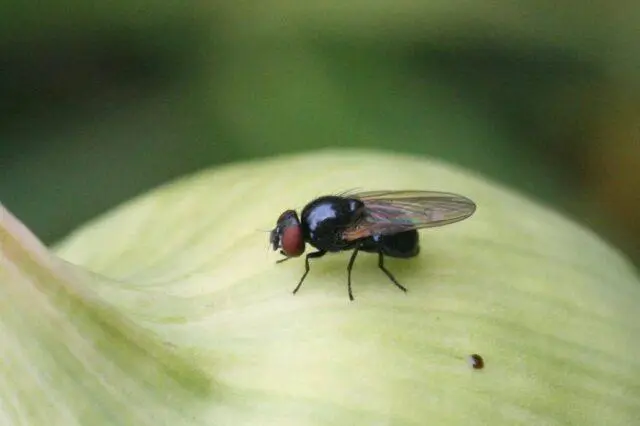
The onion fly is a threat to all types of onions, as well as garlic, tulips and daffodils.
How long does an onion fly live
The life span of an adult onion fly is 12-30 days. The first generation of the pest appears in May, the second is formed in July, so the parasite causes damage to garden and ornamental plants in waves.
What is dangerous onion fly
The main damage to horticultural crops is caused by onion fly larvae – up to 50 of them can be present in one underground fruit. Insects eat away the cores of the bulbs from the inside, as a result of which the nutrition of the stems, leaves and flowers is disturbed. Through the places of damage, bacterial and fungal infections quickly penetrate into the plants, plantings begin to emit a strong unpleasant smell of decay and, ultimately, die.
When an onion fly appears, the beds can be saved with an early start of treatment. The extermination of the pest after the first wave gives a chance to save the crop. If the larvae hatch again, then, most likely, the infected plantings will have to be completely destroyed.
Signs of defeat
Onion fly larvae harm plants underground and are also small in size. It is very difficult to see them with the naked eye. The presence of a pest can be determined mainly by indirect symptoms:
- slow development of plants;
- yellowing and drying of stems and leaves;
- unpleasant putrefactive odor from plantings.
If these signs occur, you need to dig out the affected plant from the ground and inspect its bulb. Most likely, the turnip will be soft, with traces of decay and with numerous white worms in a wide cavity in the central part. Clusters of larvae are also noticeable on the roots of a diseased bulb.
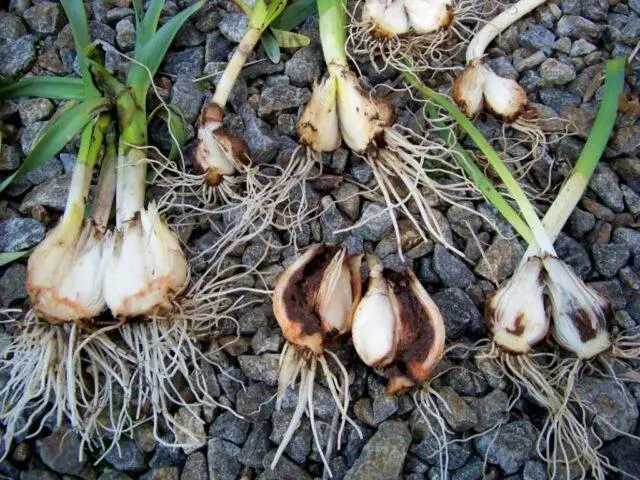
With serious damage to the bulb, it is no longer possible to save the plant from the fly – it remains to be destroyed
How to get rid of onion flies in the garden
You can treat onions, garlic and ornamental plants from onion flies with chemical and household products. Preparations of both categories have a good effect, but it is necessary to start pest control as early as possible.
Chemical and biological preparations for onion flies
Chemical and biological agents are highly effective and help to reliably get rid of the pest. Their main disadvantage is toxicity. It is recommended to use most products at the beginning of the growing season. Otherwise, even the saved onion crop will be unfit for consumption – turnips will accumulate harmful substances in themselves.
Fly-eater
The drug with the active ingredient diazinon has low toxicity to plants, but works well against the onion fly. Sold in the form of granules, which must be laid in the soil before planting a garden crop. The agent remains active for two months, effectively prevents the vital activity of onion fly larvae and prevents their pupation in the ground.

The fly-eater is applied to the soil in a volume of 5 g per meter of plantings
Aktara
An insecticide with powerful toxic properties contains the substance thiamethoxam. In the fight against the onion fly, the agent is usually used for spraying. It is enough to dilute 10 g of the drug in 4 liters of water, treatments are carried out every 2-4 weeks twice per season.

Aktara works equally well in dry and rainy weather
Phytoverm
An insecticide based on the active ingredient aversectin C is designed to combat the adult onion fly. It has no effect on eggs and larvae, however, it paralyzes insects capable of reproduction and leads to their death.
Spraying plantings with Fitoverm is carried out once every two weeks throughout the entire growing season. In 10 liters of water, dilute 50 ml of the drug.
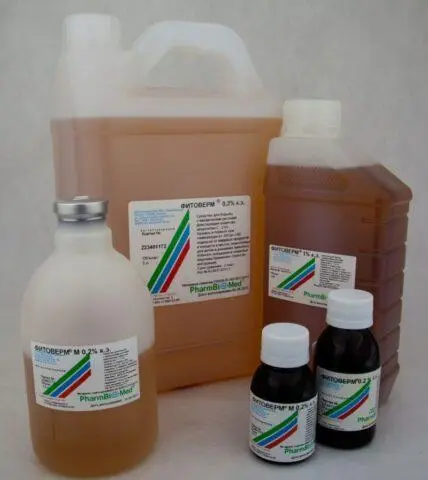
Fitoverm does not accumulate in the soil and bulbs and is considered a relatively safe preparation.
How to get rid of onion flies with folk remedies
You can quickly get rid of onion flies on onions with the help of household products. They have a less powerful effect than chemicals, but they remain safe for animals and humans and are suitable for use at any stage of the growing season.
Ash
The simplest and most affordable remedy for onion flies in the garden is ordinary wood ash. You can get it after burning the cut branches of trees and shrubs.
To control the pest, it is necessary to sprinkle planting ash between the rows after each watering and lightly embed into the soil with small rakes. The procedure should be repeated twice a month. The ash will help scare away the adult onion fly and interfere with the vital activity of the larvae.
Tobacco dust
You can poison flies on onions with tobacco dust – it is sold in hardware and specialized gardening stores. Use the product in the same way as wood ash – sprinkle plantings every two weeks along the aisles after another moistening. It is recommended to start processing immediately after thawing the soil in the spring, and continue them until autumn.
Salt
Salt solution of weak concentration helps to destroy the onion fly in the garden. Use it like this:
- 10 g of table salt are poured into 250 liters of water.
- Stir the grains until dissolved.
- Water the onion plantings under the root with the prepared product on pre-moistened soil.
Excess salt not only destroys the fly, but also harms the plants themselves. So that the onion does not begin to wither, a few hours after processing the aisle, it is necessary to shed it again with clean water. From the green feathers and the ground part of the turnips, the saline solution is also washed off.
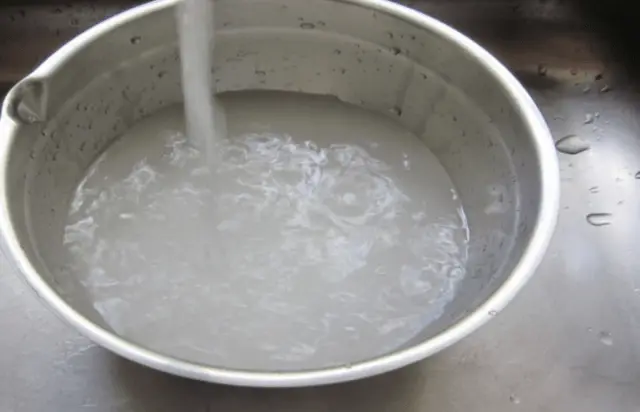
You can water the beds with onions with saline only once per season.
Sagebrush
To combat the onion fly on the onion, you can use an infusion of wormwood. Prepare the drug according to the following algorithm:
- Fresh branches of the plant are crushed in an amount of 1,5 kg.
- Pour raw materials with 10 ml of warm water and leave in a closed bucket for three days.
- After the expiration of the period, filter the infusion.
The ready-made product is abundantly watered onion plantings in the aisles. Repeat the procedure every two weeks – this will prevent the reappearance of the pest.
Carrots
You can fight the onion fly in the garden with the help of carrots. This culture repels the pest with its aroma and, in principle, allows you to protect plantings from the negative effects of the insect.
In order to prevent flies, plants are placed in close proximity to each other. But at the same time, it must be borne in mind that carrots are moisture-loving crops, but onions on a turnip are completely stopped watering a month before harvesting. Plants should be planted in such a way that it remains possible to separately moisten the beds in accordance with agricultural technology.
Marigold
A good prevention of onion flies are decorative marigolds planted near vegetable beds. They emit an aroma that repels pests.
Usually flowers are sown around the perimeter of the plot with onions. But also for marigolds, you can prepare transverse grooves on the beds themselves and plant plants at intervals of 3-4 lines.
pine needles
Pine needles help save the onion from the onion fly. Their smell repels the pest, so it is recommended to mulch the beds with needles immediately after the first shoots appear.
To combat the onion fly, you can also use pine infusion. They do it like this:
- Shredded branches are poured into the bucket by about 1/3.
- Pour raw materials with warm water.
- Leave to infuse under the lid for four days.
- Filter the finished product.
After the next watering, the beds need to be additionally moistened with coniferous infusion.
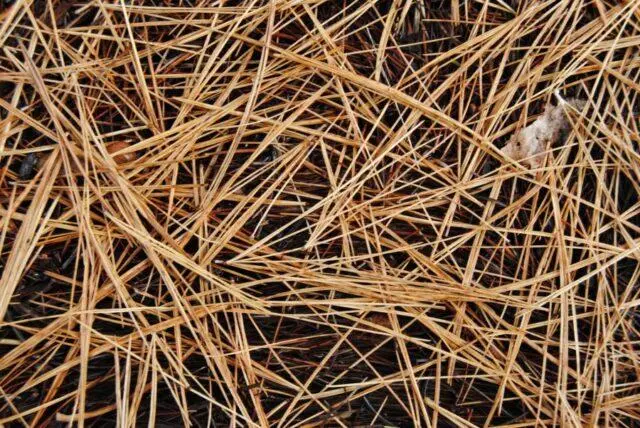
Fresh and dry pine needles are equally good for protecting onions from fly.
Naphthalene
Naphthalene helps to remove the onion fly – it has an unpleasant odor for the pest. At home, the drug is usually used in the form of balls. But before using them in the garden, they need to be ground into powder.
The agent obtained from 8-10 naphthalene balls is mixed with 5 kg of sand and sprinkled with onion beds with the resulting composition. To reliably secure landings from flies, you need to repeat the procedure every ten days during the summer.
Kerosene
With a strong invasion of the onion fly, kerosene with its sharp and strong odor has a good effect. Insect repellent is done like this:
- Pour about 1 ml of kerosene into 2/200 bucket of sand.
- Mix the contents of the container properly.
- Scatter sand between the rows in the beds every 12 days.
Kerosene repels the onion fly well, but it does not harm the crop. The use of the product does not affect the taste and aroma of underground fruits.
Ammonia
You can kill an onion fly with ammonia. The working solution using the substance is prepared as follows:
- Three large spoons of ammonia are bred in a bucket of water.
- Stir the liquid.
- Water the beds with the resulting product in the morning or at sunset.
If the onion fly has already managed to damage the plantings, then treatments are carried out every five days. For prevention, it is enough to use a solution of ammonia every 12 days.
How to protect onions from onion flies
The fight against onion fly in the garden is not only spraying and watering with insecticidal agents. To eliminate and prevent the pest, one should, first of all, pay attention to agricultural technology.
The onion fly hibernates in plant debris in the beds and in the soil at a depth of up to 20 cm.
In the fall, in preparation for winter, the beds must be carefully dug up. The larvae and pupae of the onion fly in this case will be on the surface and freeze with the onset of winter. In the spring, loosening the soil should be repeated, it is additionally recommended to shed the soil with a solution of potassium permanganate or another disinfectant.
Processing onions before planting from an onion fly
Special processing of planting material helps to protect the onion from the pest. It is carried out according to the following algorithm:
- Carefully inspect the bulbs and discard all specimens with traces of rot or other damage.
- In a small container, dissolve 1 g of potassium permanganate per 1 liter of water until a slightly pink liquid is obtained.
- Planting material is lowered into the prepared product and kept for half an hour.
- The bulbs are dried from moisture and transferred to the prepared area.
Also, planting material can simply be dipped in hot water at about 50 ° C for 15 minutes. But heat treatment without the use of fungicides gives less reliable results.

Before planting, onion sets can be heated for several hours in the oven at 40 ° C
Conclusion
The onion fly is a pest that can completely destroy plantings of onions and related plants during the summer. The fight against insects must begin at the first sign of infection; purchased and household products are suitable for the destruction of the parasite.










